The influence of graphic design on politics, protest and power
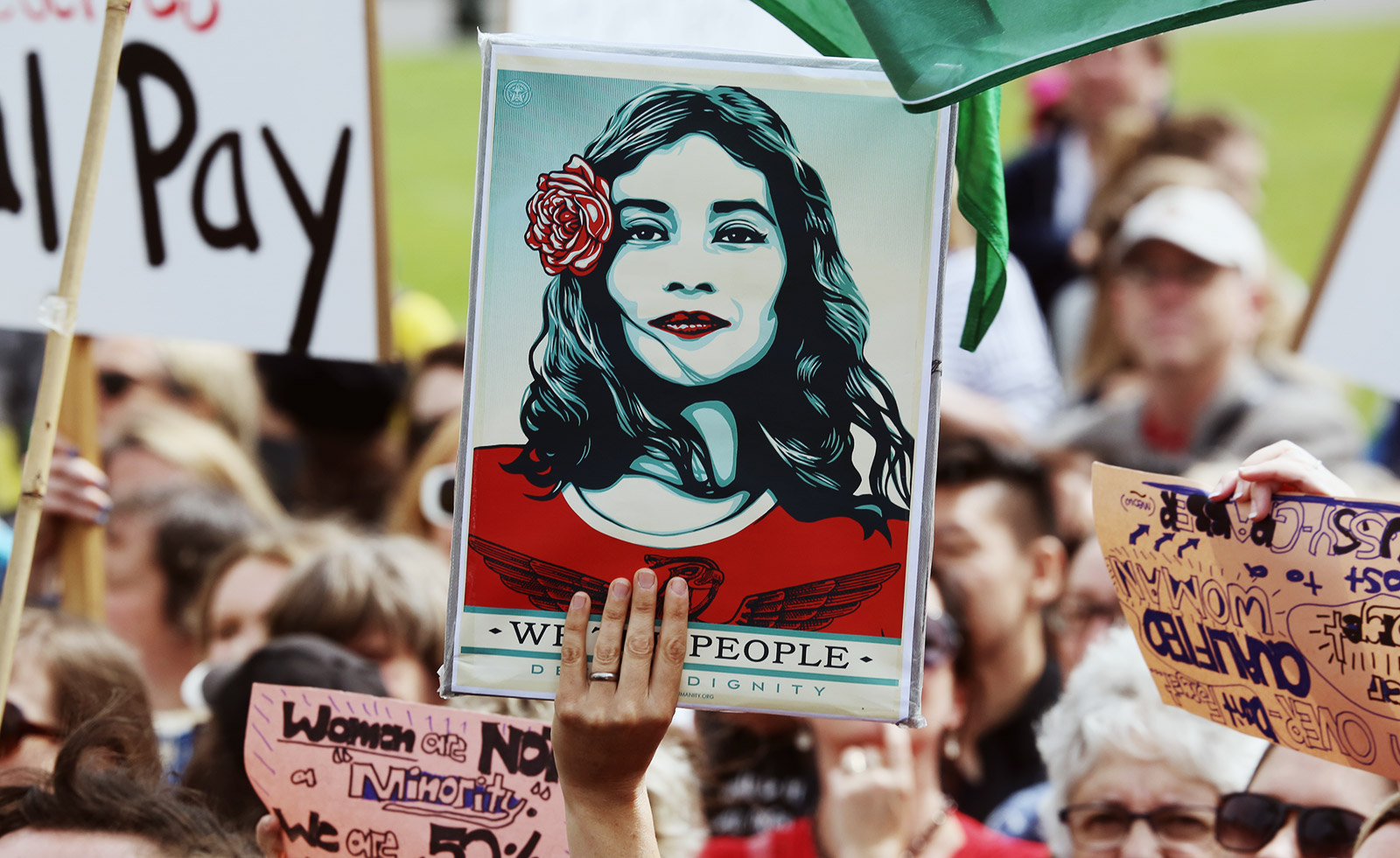
Donald Trump, Vladimir Putin, and a giant inflatable rubber duck. The latest exhibition at London’s Design Museum, ‘Hope to Nope: Graphics and Politics 2008-18’ (named after the iconic Shepard Fairey poster of Barack Obama, and the viral Trump meme, respectively) is shocking, surprising, and sometimes overwhelming.
A deep dive into graphic design of the last ten years – a decade that has seen catastrophic shifts in global politics, economy and the environment – the exhibition features everything from beer mats and badges to flags, posters and placards, with plenty of new media and technology, emphasised as perhaps the most insidious way to create and disseminate political ideas.
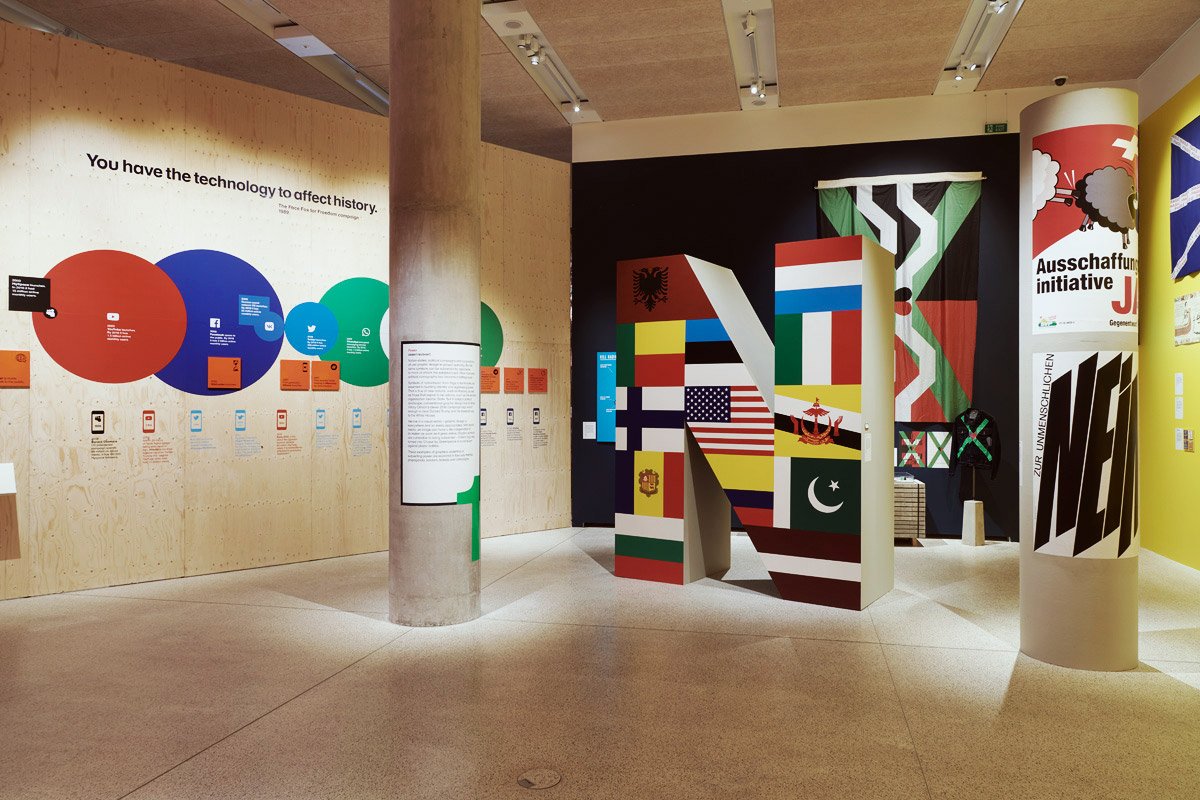
Installation view of ‘Hope to Nope: Graphics and Politics 2008-18’ at the Design Museum, London.
‘One of our main aims with “Hope to Nope” was to demonstrate that graphic design makes a demonstrable difference and to foreground its role in how people are informed, educated, entertained and provoked,’ asserts Lucienne Roberts. The graphic designer and author curated the show with fellow GraphicDesign& co-founder David Shaw, as well as Rebecca Wright and the Design Museum’s Margaret Cubbage (a book by the same name has also been published by GraphicDesign&).
‘New technology has in a sense democratised graphic design,’ Roberts explains. ‘Utilised by the marginalised and powerful alike, traditional media now rubs shoulders with the hashtag and the meme, making graphic design critical in giving everyone a political voice. Arguably, new technology has empowered grassroots activists but also resulted in targeted campaigns by political interest groups, designed to set people against one another and even destabilise political systems.’
Slogans reverberate off the walls: HOPE TRUMPS HATE, I’M IN, JE SUIS CHARLIE, I AM THE 99%. Organised into three sections (Protest, Power and Personality) ‘Hope to Nope’ makes the relationship between politics, technology and design apparent, moving from local to global campaigns, worldwide initiatives and more DIY forms of subverting the status quo, there is urgency, hilarity and absurdity here: not least in a rap video produced by the Chinese government.
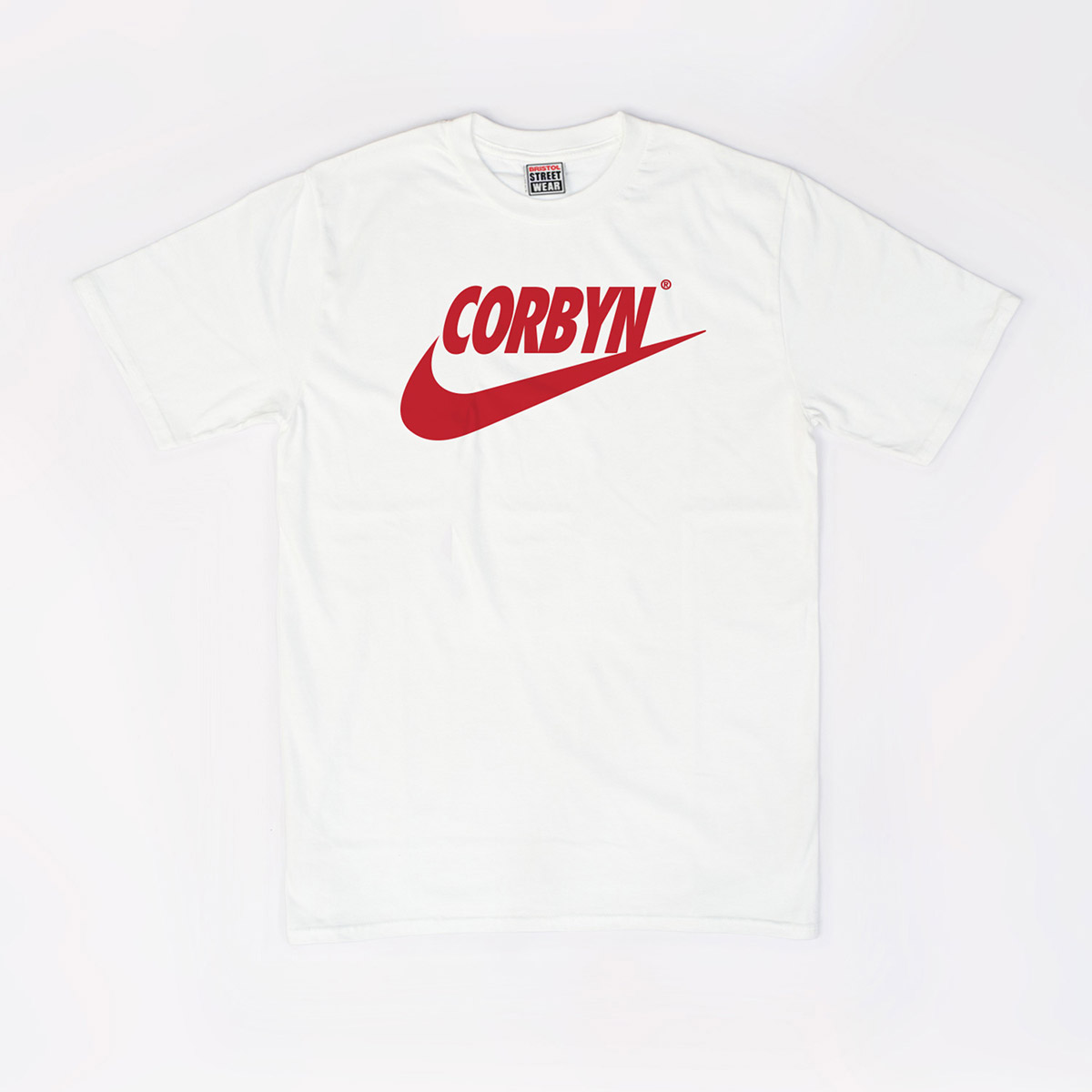
Corbyn swoosh t-shirt, by Bristol Street War
‘Hope to Nope’ also reminds us of the success stories – moments that these designs propelled action. One reminder is the blue bra that was painted on the streets of Cairo in solidarity with the woman who was violently beaten by the military during civil arrest in 2011. The images proliferated online, garnering global media coverage, and prompting thousands of Egyptians to march into Tahrir Square.
Whether effective in their purpose or not, Roberts argues, graphic design – especially once out in the public space – is always political. Her own studio has worked with NGOs, trade unions and public health and education organisations. ‘Graphic design is a carrier of messages, a tool of influence used to persuade. The question we have a responsibility to ask is, “Persuade to do what and to whose benefit?”,’ she says. ‘Graphic design is rarely about graphic design after all.’
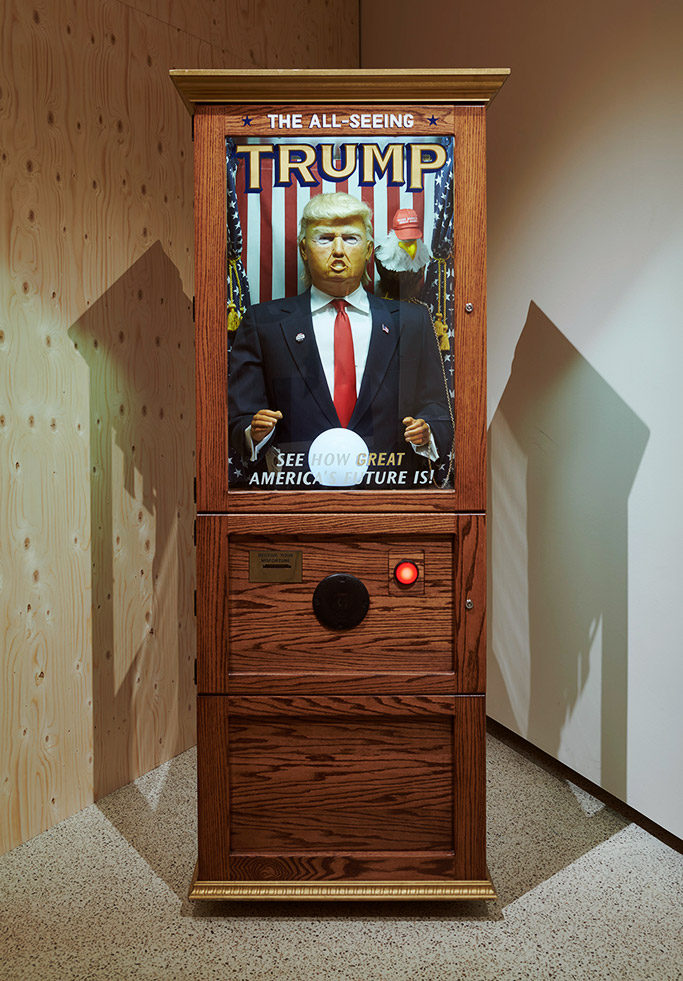
Installation view of ‘Hope to Nope: Graphics and Politics 2008-18’ at the Design Museum.
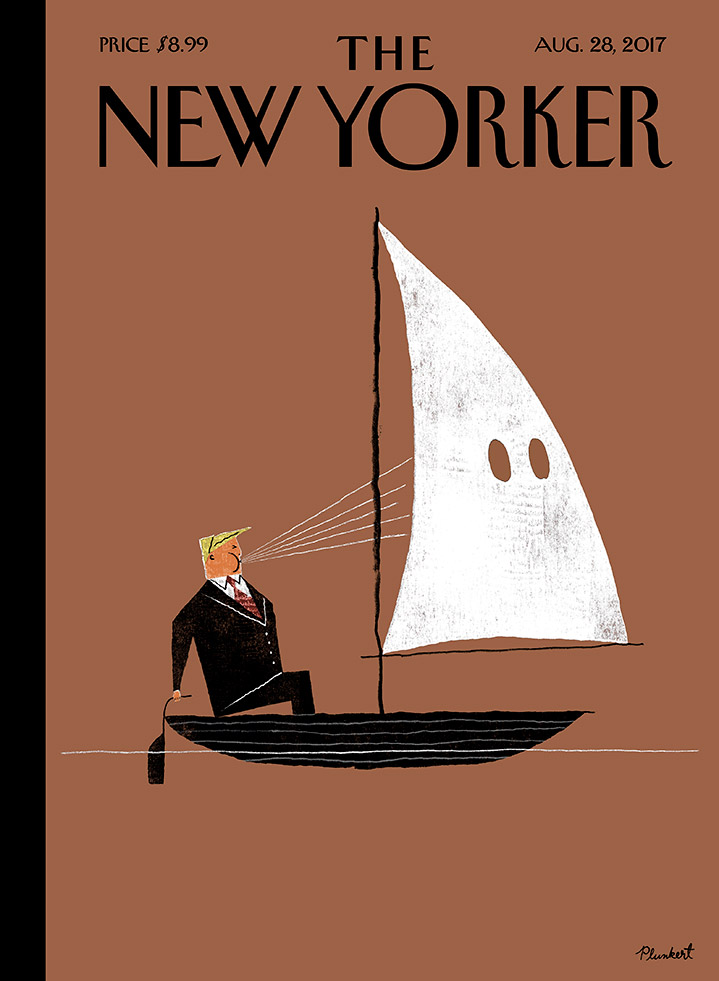
Blowhard, 2017, by David Plunkert, for The New Yorker
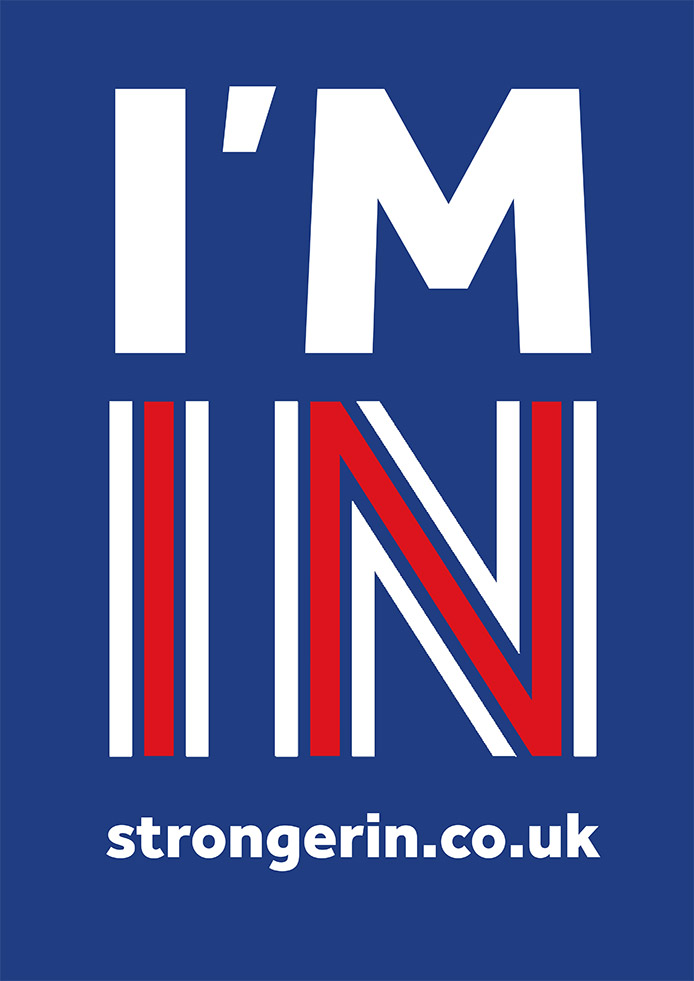
Remain campaign poster for the EU Referendum.
INFORMATION
‘Hope to Nope: Graphics and Politics 2008-18’ is on view until 12 August. ‘Hope to Nope’, £15, published by GraphicDesign&. For more information, visit the Design Museum website
ADDRESS
Design Museum
224-238 Kensington High Street
London W8 6AG
Wallpaper* Newsletter
Receive our daily digest of inspiration, escapism and design stories from around the world direct to your inbox.
Charlotte Jansen is a journalist and the author of two books on photography, Girl on Girl (2017) and Photography Now (2021). She is commissioning editor at Elephant magazine and has written on contemporary art and culture for The Guardian, the Financial Times, ELLE, the British Journal of Photography, Frieze and Artsy. Jansen is also presenter of Dior Talks podcast series, The Female Gaze.
-
 Meet Lisbeth Sachs, the lesser known Swiss modernist architect
Meet Lisbeth Sachs, the lesser known Swiss modernist architectPioneering Lisbeth Sachs is the Swiss architect behind the inspiration for creative collective Annexe’s reimagining of the Swiss pavilion for the Venice Architecture Biennale 2025
By Adam Štěch
-
 A stripped-back elegance defines these timeless watch designs
A stripped-back elegance defines these timeless watch designsWatches from Cartier, Van Cleef & Arpels, Rolex and more speak to universal design codes
By Hannah Silver
-
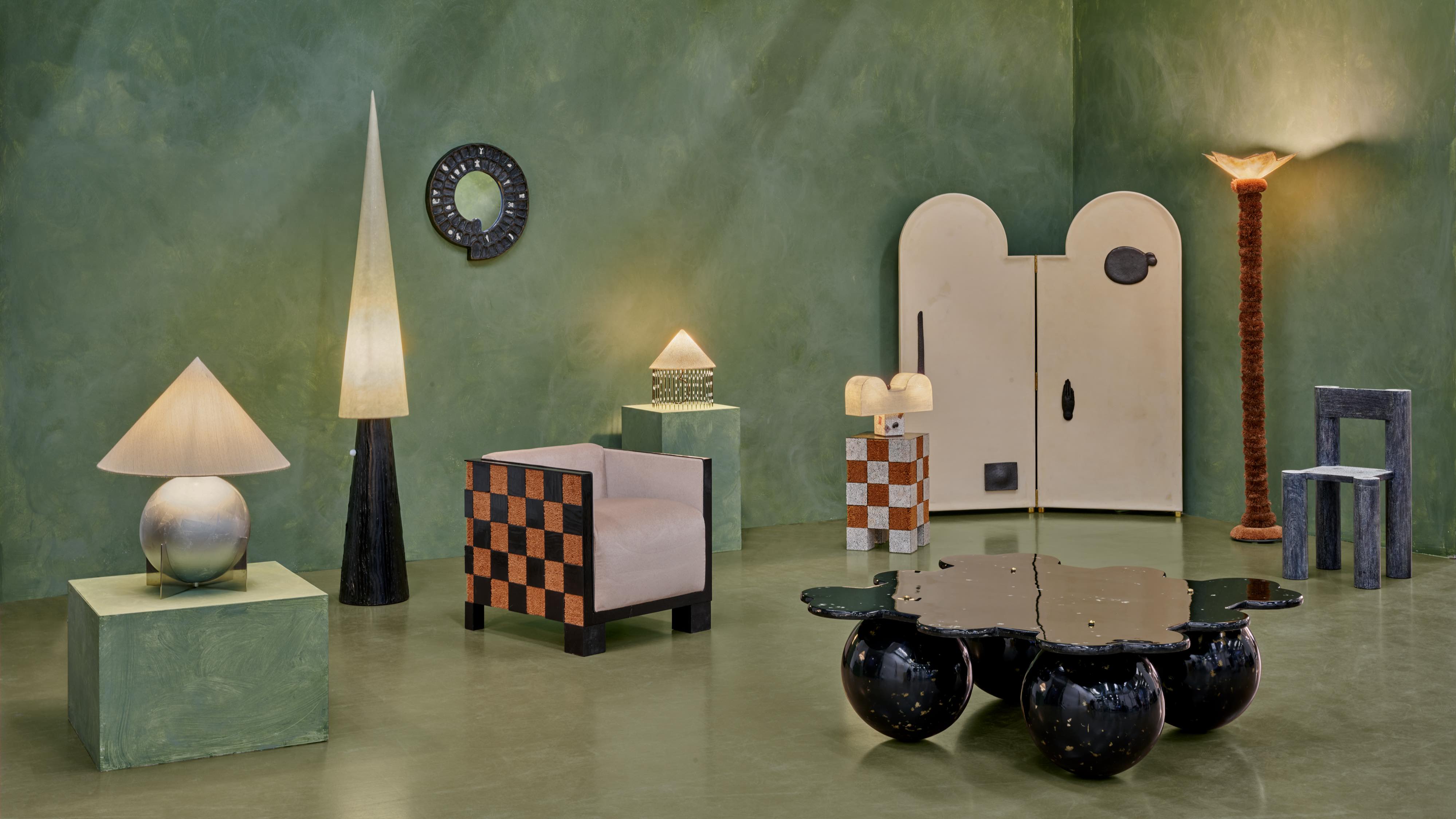 Postcard from Brussels: a maverick design scene has taken root in the Belgian capital
Postcard from Brussels: a maverick design scene has taken root in the Belgian capitalBrussels has emerged as one of the best places for creatives to live, operate and even sell. Wallpaper* paid a visit during the annual Collectible fair to see how it's coming into its own
By Adrian Madlener
-
 ‘Humour is foundational’: artist Ella Kruglyanskaya on painting as a ‘highly questionable’ pursuit
‘Humour is foundational’: artist Ella Kruglyanskaya on painting as a ‘highly questionable’ pursuitElla Kruglyanskaya’s exhibition, ‘Shadows’ at Thomas Dane Gallery, is the first in a series of three this year, with openings in Basel and New York to follow
By Hannah Silver
-
 The art of the textile label: how British mill-made cloth sold itself to Indian buyers
The art of the textile label: how British mill-made cloth sold itself to Indian buyersAn exhibition of Indo-British textile labels at the Museum of Art & Photography (MAP) in Bengaluru is a journey through colonial desire and the design of mass persuasion
By Aastha D
-
 Artist Qualeasha Wood explores the digital glitch to weave stories of the Black female experience
Artist Qualeasha Wood explores the digital glitch to weave stories of the Black female experienceIn ‘Malware’, her new London exhibition at Pippy Houldsworth Gallery, the American artist’s tapestries, tuftings and videos delve into the world of internet malfunction
By Hannah Silver
-
 Ed Atkins confronts death at Tate Britain
Ed Atkins confronts death at Tate BritainIn his new London exhibition, the artist prods at the limits of existence through digital and physical works, including a film starring Toby Jones
By Emily Steer
-
 Tom Wesselmann’s 'Up Close' and the anatomy of desire
Tom Wesselmann’s 'Up Close' and the anatomy of desireIn a new exhibition currently on show at Almine Rech in London, Tom Wesselmann challenges the limits of figurative painting
By Sam Moore
-
 A major Frida Kahlo exhibition is coming to the Tate Modern next year
A major Frida Kahlo exhibition is coming to the Tate Modern next yearTate’s 2026 programme includes 'Frida: The Making of an Icon', which will trace the professional and personal life of countercultural figurehead Frida Kahlo
By Anna Solomon
-
 A portrait of the artist: Sotheby’s puts Grayson Perry in the spotlight
A portrait of the artist: Sotheby’s puts Grayson Perry in the spotlightFor more than a decade, photographer Richard Ansett has made Grayson Perry his muse. Now Sotheby’s is staging a selling exhibition of their work
By Hannah Silver
-
 From counter-culture to Northern Soul, these photos chart an intimate history of working-class Britain
From counter-culture to Northern Soul, these photos chart an intimate history of working-class Britain‘After the End of History: British Working Class Photography 1989 – 2024’ is at Edinburgh gallery Stills
By Tianna Williams